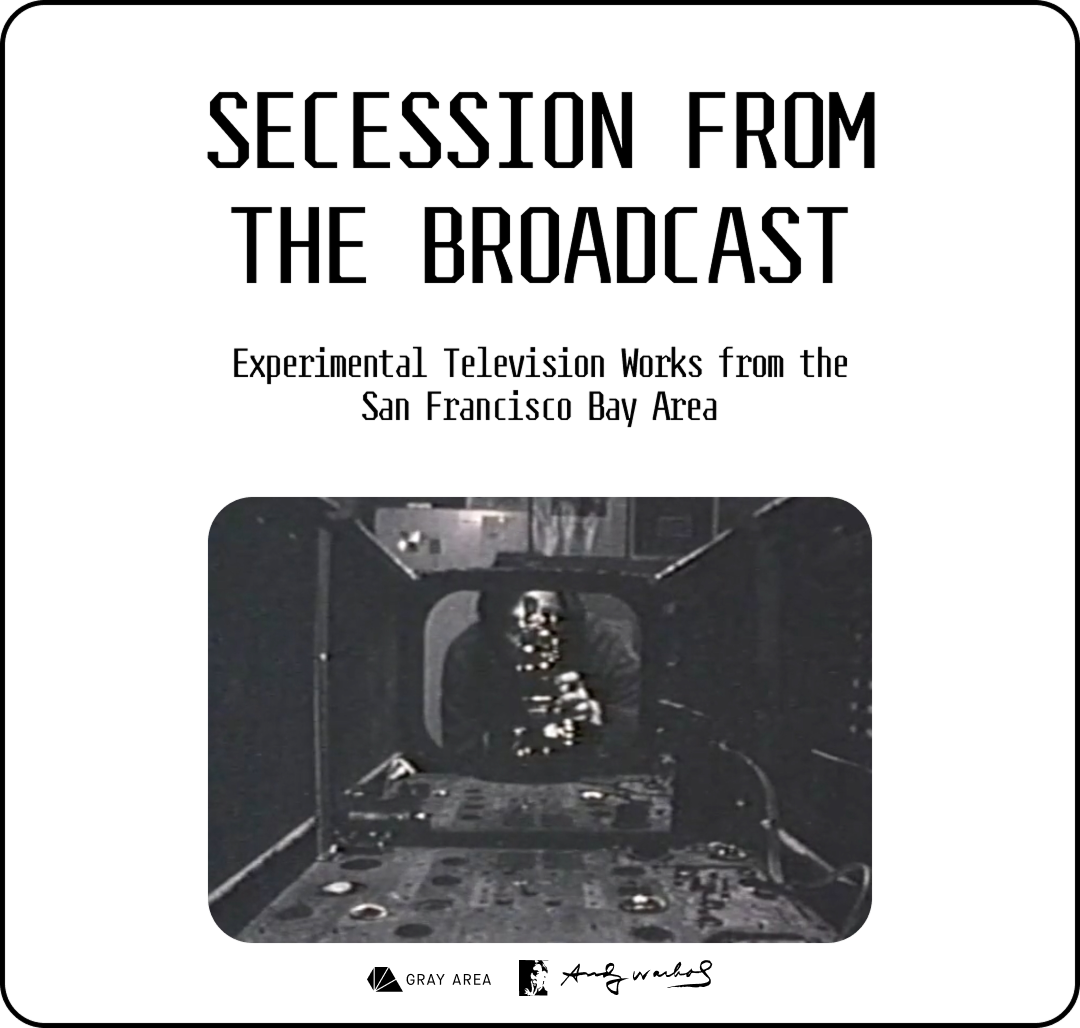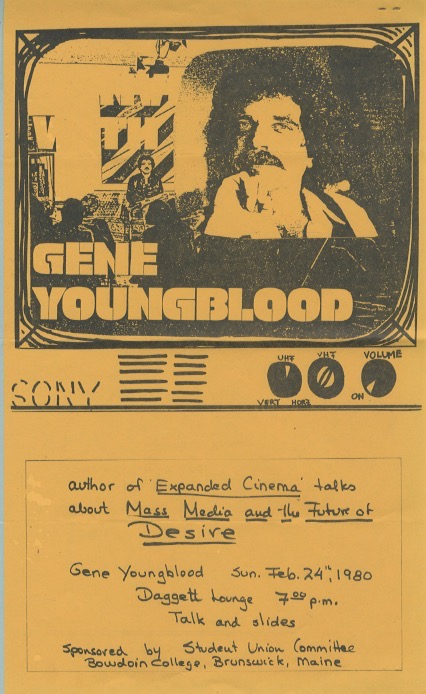
Secession from the Broadcast: Experimental Television Works from the San Francisco Bay Area
“Let’s go through the TV like Alice down the rabbit hole, into what we might call the broadcast’s deep ecology. What’s behind the screen?” — Gene Youngblood
Secession from the Broadcast:
Experimental Television Works from the San Francisco Bay Area
Sunday, May 18, 2025
Doors: 6:30PM
All ages
Seated screening
View our FAQ page for more info, or contact us at [email protected] with any accommodation requests.
About the Event
While the pervasive reach of centralized television networks ballooned throughout the 1960s, maverick video artists began experimenting with the medium. Aided by the development of portable recording equipment and half-inch videotape, as well as by newly formed organizations focused on putting creative work on TV, early video artists turned the broadcast into a platform for artistic expression. In doing so, they challenged network television’s private, advertising-fuelled, fragmenting nature.
This screening event will explore the history of artistic experimentation with the televisual medium as it manifested in the San Francisco Bay Area. The program will begin with Making Visible (1969) by Edwin Schlossberg, a video meditation on the nature of the image produced through the Dilexi Series, an initiative spearheaded by Dilexi Gallery director Jim Newman and KQED-9 TV. The next film, A Visit to the Center (1967), showcases how the National Center for Experiments in Television beamed avant-garde video works onto San Franciscans’ television sets. Former Pacific Film Archive media curator Steve Seid will also introduce Stephen Beck’s Illuminated Music #2 (1973), an example of how works produced through the NCET subverted televisual conventions.
While television feels like an almost anachronistic medium in today’s many-screened media landscape, looking back on this moment in which artists advocated for the decentralization of broadcasting offers strategies for rewiring the circuits through which we create and consume information.
About the Future of Desire Research Project

This selection of televised works emerges from Gray Area Research Manager Hannah Scott’s engagement with the archives of Gene Youngblood, the late media theorist and friend of Gray Area. After publishing his now famous survey of intermedia art, Expanded Cinema, in 1970, Youngblood embarked on a decades-long project calling for a “communications revolution.” The title of this event is derived from one of his lectures on media democracy, which was published by Evidence House in 2020. Though he never published his book arguing for the decentralization of communications infrastructure, Youngblood’s archive reveals a uniquely rich lens through which to view experimental television works as not simply putting art on the airwaves, but as an effort to invert the structures through which information circulates within a social body.
This program is generously supported by the Andy Warhol Foundation for the Visual Arts and the Emily Hall Tremaine Foundation.

Gene Youngblood

Hannah Scott
Hannah Scott is a curator and writer based in San Francisco. As Research Manager at Gray Area, she leads programs that convene artists, technologists, designers, and scientists to develop prototypes, ideas, and experiences that critically and creatively intervene in social and technological issues. Guiding Hannah’s work facilitating anti-disciplinary knowledge production is her research practice, which asks how artistic experimentation has helped shape the evolution of technoculture. While pursuing a B.A. in Science, Technology, and Society at Stanford University, Hannah wrote an award-winning honors thesis on the 1960s multimedia art collective PULSA and led efforts to preserve the papers of media theorist Gene Youngblood. Hannah has applied her research to producing cultural initiatives with institutions and projects around the world, including Transformations of the Human (ToftH) and Ars Electronica.

Steve Seid
For twenty five years, Steve Seid was a Film and Video Curator at the Pacific Film Archive, a department of the University of California, Berkeley. He organized almost 1,000 programs of video art, film, and new media for the PFA's public programs. These programs typically circulated around cultural, historical, and aesthetic ideas with experimental media being the prevalent form showcased. Seid also oversaw an on-going video preservation project and for ten years conducted annual workshops on visual literacy for high school teachers. He has taught video aesthetics and history courses at the University of California, Berkeley, San Francisco State University, the California College of Arts, and the San Francisco Art Institute. Following on the ambitious preservation of videotapes from the National Center for Experiments in Television (1967-1975), Seid curated Videospace (2000), a gallery exhibition dedicated to the first TV Lab. He also co-curated the first museum retrospective of Ant Farm, the ‘60s/’70s art collective and creators of Cadillac Ranch and Media Burn, which toured internationally through 2006. In the fall of 2020, Inventory Press released Seid’s in-depth critique of Ant Farm’s seminal 1975 performance and videowork Media Burn. Sumptuously illustrated, the book, Media Burn: Ant Farm and the Making of An Image, considers the spectacular circulation of a single image and its transformation as a precursor to the media-driven meme.
Image Credit: Still from Making Visible by Edwin Schlossberg, 1969.

Become a Gray Area Member
As a Gray Area Member you get special access to events, behind-the-scenes content and more. Gray Area is a dedicated family of supporters who believe in the power of creative action to catalyze social transformation. Join as a member today to provide sustaining support for our globally unique arts, education, research, and incubation programs.

